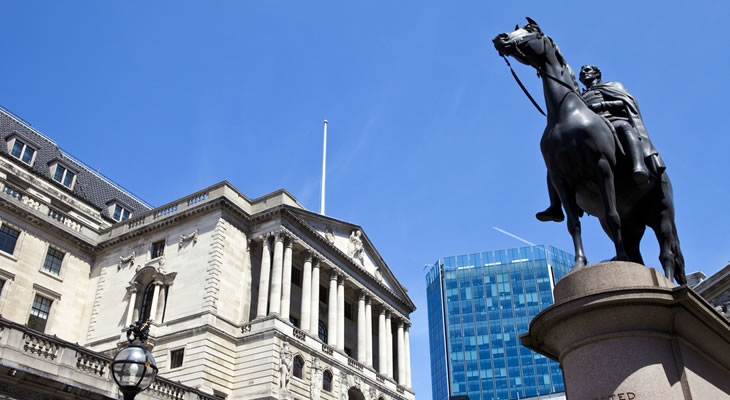Updated 14:23 14/12/2017:
The Bank of England’s (BoE) December policy decision left Pound Australian Dollar trade more limp again, as the bank maintained its cautious tone on Britain’s economy, inflation and Brexit.
While Sterling saw stronger performance in the morning due to the strong UK retail data, investors were disappointed with the bank’s continued indication that its November interest rate hike was not the beginning of a rate hike cycle.
The bank instead continued to indicate that interest rates would only raise gradually over the next few years.
Progress in Brexit talks appears to have had little impact on the Bank of England’s outlook either. The bank acknowledged the progress but reasserted that the Brexit process remained the biggest uncertainties in its outlook.
GBP AUD trended around the level of 1.7500 again following the Bank of England news.
[Published 11:56 14/12/2017]
This week has seen the Pound Australian Dollar exchange rate tumble, due to stronger demand for risk-correlated currencies and strong Australian job market stats. Sterling has been unable to avoid dropping despite some strong UK data.
GBP AUD opened the week at the level of 1.7815 and has since slumped. On Thursday morning, the pair trended near a December low of 1.7496.
Pound (GBP) Supported by UK Data with Bank of England (BoE) in Focus
After days of drops against the Australian Dollar, the Pound’s losses slowed on Thursday thanks to some stronger support from UK data.
While Wednesday’s news of rising UK wage growth impressed some investors, the Pound’s movement was mixed due to signs of weakness in the domestic job market.
Thursday’s UK retail sales results were more optimistic, coming in well above expectations in all major prints.
The report indicated that Black Friday had had a notable impact on UK retail sales trends in November, with the monthly figure jumping from 0.5% to 1.1%. The yearly figure beat 0.3% forecasts and jumped from -0.3% to 1.6%.
However, some analysts are concerned that the Black Friday activity and cold weather could lead to less retail activity in December.
This, as well as market anticipation for the Bank of England’s (BoE) December policy decision limited the Pound’s gains.
Investors are highly anticipating the bank’s decision, due midday Thursday, especially to see if recent Brexit progress or rising UK inflation and wage growth has given the bank to be any more hawkish on its 2018 outlook.
According to Petr Krpata, strategist from ING;
‘It will be interesting to see whether the BoE explicitly acknowledges the latest constructive developments in Brexit talks today,
If so, one could see this as a hawkish development in the context of the Bank’s policy reaction function — with risks that sterling moves back above $1.3450 on a steeper UK rate curve. A non-event should have limited downside for Sterling.’
As a result, the Bank of England decision is likely to influence the Pound’s movements for the remainder of the week.
If the bank is more hawkish, the Pound is likely to see stronger demand as the outlook improves. However, if the bank remains concerned about Brexit or the UK economy, the Pound Australian Dollar exchange rate could end the week near its lows.
Australian Dollar (AUD) Benefits on Strong Australian Job Stats
The Australian Dollar has seen much stronger demand this week, as the currency has benefitted from stronger domestic data as well as market appetite for riskier currencies.
Wednesday’s data indicated that Australia’s consumer confidence was rising in December, and this was followed on Thursday by an overall impressive Australian job market report from November.
Perhaps the most notable aspect of the report was the big jump in employment. Analysts expected employment to have risen by 19.2k in November, but the figure instead came in at an impressive 61.6k. The previous figure was revised higher from 3.7k to 7.8k.
Australia’s participation rate rose unexpectedly from a revised 65.2% to 65.5%, despite being forecast to remain at 65.1%. Despite the jump in participation, the unemployment rate remained at 5.4%, indicating that many citizens were finding work.
Due to the strong late-2017 job market data, analysts are becoming more confident that Australia will continue to see decent growth in early-2018. This made the ‘Aussie’ more appealing.
According to Kate Hickie from Capital Economics;
‘While such elevated rates of jobs growth are unlikely to be sustained, most leading labour market indicators suggest growth will remain decent in the coming months. In other words, it has been a stellar year for the labour market, which should provide some support to income growth.’
Overall, the data boosted the Australian Dollar outlook slightly. However, analysts remain concerned about Australia’s wage growth, which remains subdued and is likely to weigh on the chances of any rate hikes from the Reserve Bank of Australia (RBA) in the coming year.
With a lack of major Australian data due for the remainder of the year, the ‘Aussie’ outlook is likely to be more influenced by risk-sentiment in the coming weeks.
Demand for risky currencies has been higher this week due to market disappointment in the Federal Reserve’s cautious tone towards 2018 monetary policy. If US Dollar (USD) demand remains weak, the Australian Dollar could hold its ground against Sterling.
GBP AUD Interbank Rate
At the time of writing this article, the Pound Australian Dollar exchange rate trended in the region of 1.7535. The Australian Dollar to Pound exchange rate traded at around 0.5700.


Comments are closed.